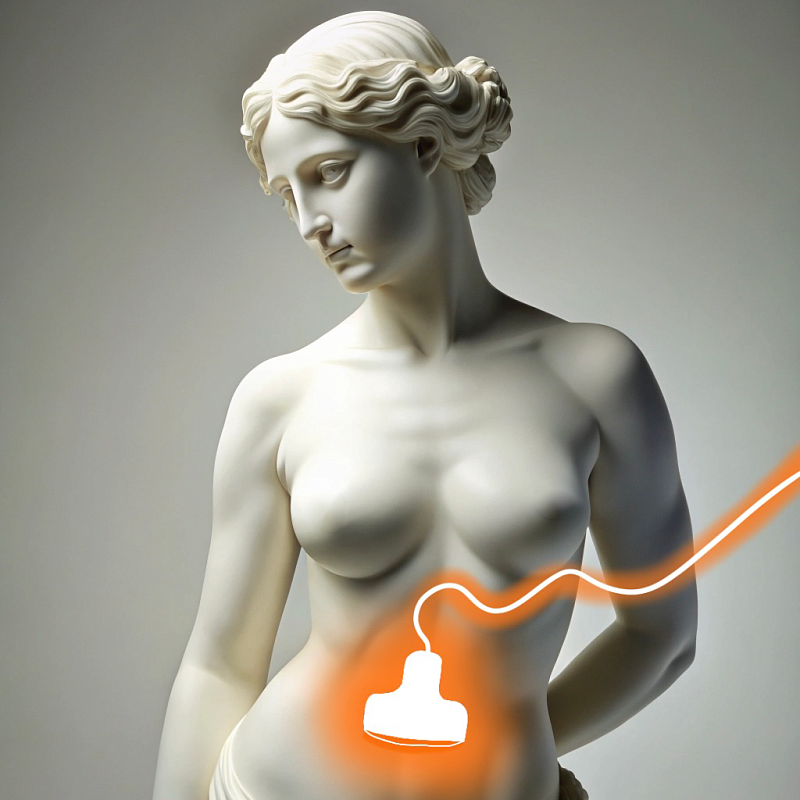Ultrasound of peripheral nerves
A diagnostic method that allows you to assess the condition of nerve trunks and identify pathological changes that disrupt the conduction of nerve impulses.

Peripheral nerves, such as the sciatic, median, and ulnar nerves, can be subject to inflammation, injury, and compression.
Ultrasound of peripheral nerves does not require special training. It is enough for the patient to remove clothes and jewelry from the area under study. Additional examinations may be prescribed, depending on the symptoms and the diagnosis.
The patient is placed in a comfortable position on the couch. The doctor applies the gel to the skin to improve the contact of the sensor with the body, and begins the study. The sensor of the device is carried out on the surface of the skin, fixing the size, structure, contours of the nerve and the condition of the surrounding tissues. During the study, the doctor may ask the patient to change the position of the limbs for better visualization. Scanning is performed in longitudinal and transverse projections. The study takes about 15-30 minutes.
A high-frequency ultrasound machine is used for ultrasound. Modern sensors have high resolution and allow you to get a detailed image of small structures.
The patient can immediately return to business as usual after the end of the ultrasound. The results are provided in the form of a conclusion, which should be discussed with the attending physician to prescribe further examinations or treatment for the detection of pathologies.
Benefits
Safety
Ultrasound can be performed as many times as required for dynamic observation.
High visualization accuracy
Ultrasound machines allow you to study the anatomy of the nerve and surrounding structures in detail.
Dynamic evaluation
An assessment of the condition of the nerve during movement allows you to identify disorders that are not visible at rest.
A wide range of diagnosed conditions
The technique helps to diagnose a wide range of diseases.
Frequently Asked Questions
Is it possible to perform ultrasound of peripheral nerves in the presence of metal implants?
What are the advantages of ultrasound compared to MRI in the examination of peripheral nerves?
When can I get the results after the ultrasound?
Didn't find an answer to your question?
You can describe your problem in detail and ask a question to the doctor. He will answer you and help you find a solution
Врачи
Смотреть всех врачейUltrasound Diagnostics Doctor
Similar referral activities
Ultrasound of the joints
A diagnostic method that allows you to assess the condition of soft tissues, tendons, ligaments and cartilage structures of the joint. It is used to detect inflammatory, traumatic and degenerative changes in joints.
Ultrasound of the abdominal cavity
Ultrasound allows you to visualize internal organs such as the liver, gallbladder, pancreas, spleen, kidneys and other structures.
Ultrasound of the gallbladder
A study that allows you to assess the condition and functionality of the gallbladder, as well as identify pathologies such as stones, inflammatory processes and neoplasms.
Ultrasound of the musculoskeletal system
Ultrasound examination, which provides high-precision visualization of muscles, tendons, joints and bone surfaces, allows you to quickly identify injuries and diseases.
Ultrasound of the mammary glands
A diagnostic method that allows you to evaluate the structure of breast tissue and identify pathological changes. Suitable for women of all ages and health conditions.
Ultrasound of soft tissues
A study that allows you to assess the condition of the skin, subcutaneous fat, muscles, tendons, lymph nodes and blood vessels. It helps to identify inflammatory processes, hematomas, tumor formations and traumatic injuries.
